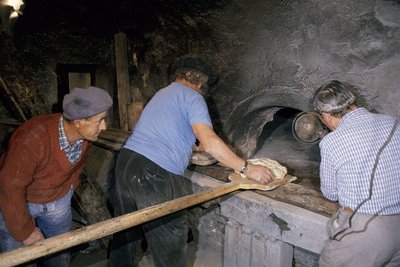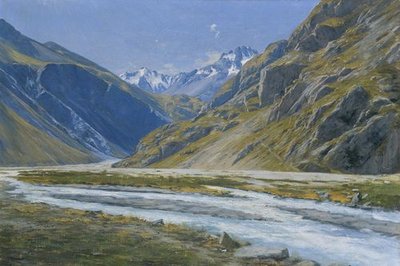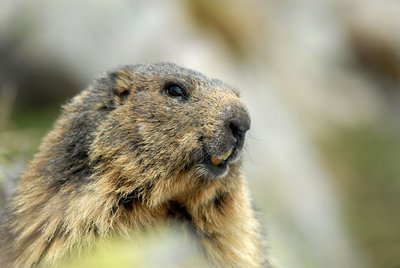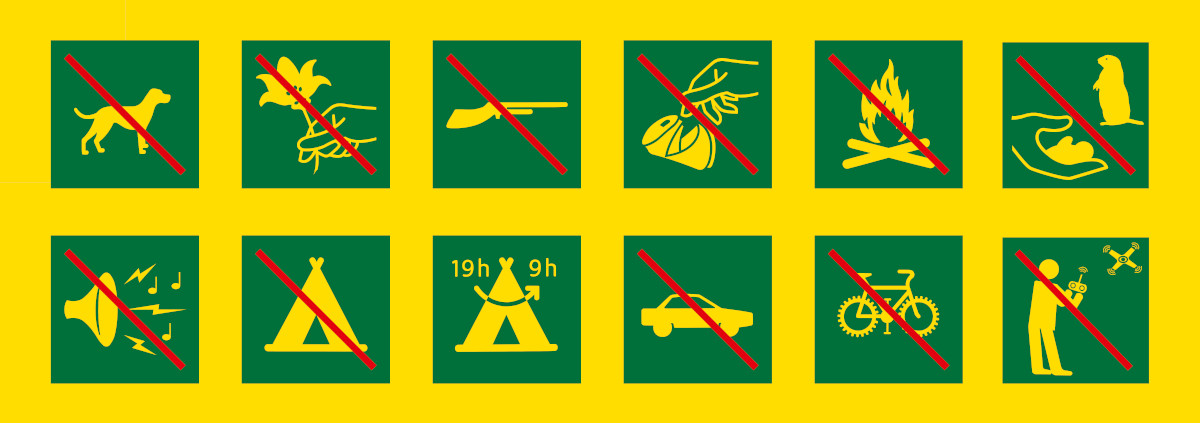
1. From La Grave to L'Alpe de Villar d'Arène (start of the GR54)
Description
- Departure : La Grave
- Arrival : Alpe de Villar d’Arène, Villar d’Arène
- Towns crossed : La Grave and Villar-d'Arêne
3 points of interest

A Villar d'Arène: le four chauffé 15 h est à point, on enfourne - Jean-Pierre Nicolet - PNE  Know-how
Know-howVillar d’Arène communal oven
Pies, raviolis and crozet pasta are some of the main culinary specialities in Villar d'Arène, but above all it is the famous Pô Buli (“boiled bread”) that has made the village’s reputation. Once a year, in November, the village inhabitants make this bread using an ancestral recipe. For over 500 years, it has been kneaded with rye flour and boiling water, and then baked in the communal oven in the centre of the village, near the Penitents’ chapel.

Vallée de la Romanche, Charles Bertier - © Musée de Grenoble  History
HistoryRomanche valley, Charles Bertier
The Romanche was a source of inspiration for many mountain artists and it have been painted repeatedly. Charles Bertier (1860-1924) was inspired to paint Vallée de la Romanche au Pied-du-Col and Les Fréaux près de la Grave, two oil paintings that were painted in 1894. The artist from Grenoble learnt to paint landscapes with Jean Achard, and mountains with the abbot Guétal and did not hesitate to set up his easel on the high summits of the Dauphiné Alps. More to the point, his mission was to make his contemporaries 'understand the mountains'!
Marmotte au printemps - PNE - Papet Rodolphe  Fauna
FaunaThe marmots’ "bosse"
The alpine marmot is naturally present on grass at altitude. Here, it occupies a singular place which we call the marmots’ "bosse». This hibernating rodent is only visible between April and October. The marmot lives in a family and respects a hierarchy. Games, grooming, fighting and biting ensure the dominance of a couple as well as the cohesion of the group. Each animal participates in the delimitation of the territory by rubbing its cheeks on rocks and also by urinating and defecating there. When there is danger, the marmot emits a high and powerful whistle in order to warn the others.
Altimetric profile
Sensitive areas
Golden eagle
- Impacted practices:
- Aerial, , Vertical
- Sensitivity periods:
- JanFebMarAprMayJunJulAug
- Contact:
- Parc National des Écrins
Julien Charron
julien.charron@ecrins-parcnational.fr
Golden eagle
- Impacted practices:
- Aerial, , Vertical
- Sensitivity periods:
- JanFebMarAprMayJunJulAug
- Contact:
- Parc National des Écrins
Julien Charron
julien.charron@ecrins-parcnational.fr
Golden eagle
- Impacted practices:
- Aerial, , Vertical
- Sensitivity periods:
- JanFebMarAprMayJunJulAug
- Contact:
- Parc National des Écrins
Julien Charron
julien.charron@ecrins-parcnational.fr
Access and parking
Parking :
Source

Report a problem or an error
If you have found an error on this page or if you have noticed any problems during your hike, please report them to us here:

